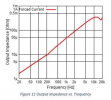Will AIYIMA A07 work with 4ohm//2.2uF load? - Test and measurements
You might get surprised (or maybe not, those who are knowledgeable). In my latest test thread, I have shown how the Hypex NC252MP failed to drive 4ohm in parallel with 2.2uF load, the load simulating some of the electrostatic speakers that are difficult to drive. So how about the tiny little AIYIMA A07? Let's test it with this load. All the measurements have been done again with 4ohm//2.2uF load, AIYIMA was supplied from 48Vdc power supply (my own design, 10A capability), measurement bandwidth was 22Hz-22kHz to keep it comparable with NC252MP test and to prevent objections on inaudibility of anything above this. Here we go:
(or maybe not, those who are knowledgeable). In my latest test thread, I have shown how the Hypex NC252MP failed to drive 4ohm in parallel with 2.2uF load, the load simulating some of the electrostatic speakers that are difficult to drive. So how about the tiny little AIYIMA A07? Let's test it with this load. All the measurements have been done again with 4ohm//2.2uF load, AIYIMA was supplied from 48Vdc power supply (my own design, 10A capability), measurement bandwidth was 22Hz-22kHz to keep it comparable with NC252MP test and to prevent objections on inaudibility of anything above this. Here we go:
1. Output noise voltage

Output noise voltage of A07 with this load is 298.6uV/BW22kHz.
A small reminder to the same test with NC252MP well, it was 20.45mV under same conditions. 68x worse.
well, it was 20.45mV under same conditions. 68x worse.
2. SINAD at 5W/1kHz

This plot must not be omitted at ASR. The SINAD result is 83.9dB.
Again a small reminder to the same test with NC252MP 47.9dB, worse by 36dB than A07, 63x.
47.9dB, worse by 36dB than A07, 63x.
3. THD+N vs. power at 1kHz

The plots show direct comparison of AIYIMA A07 and NC252MP under same test conditions.
4. THD+N vs. frequency at 22W(4ohm) power

Please note that as measuring BW is 22kHz, the plot above 11kHz shows noise only, for distortion it is pointless above 11kHz.
Note: when tetsed at 44W into this load, the amp switched off itself near to 17kHz

5. Frequency response into 4ohm//2.2uF

No surprise, +1.1dB at 10kHz and +2.2dB at 20kHz. The 2.2uF capacitor is directly added to the A07 output LC filter
6. Conclusion
Maybe surprisingly to some readers, AIYIMA A07 passed the test without any bigger problems. The rise of frequency response at the upper end is easily understandable and similar to increasing of resistive load. The limited power at very high frequencies is again understandable as a current protection action. All in all, A07 can be operated with electrostats without severe degradation of parameters.
Much better result compared to NC252MP is due to circuit principle. A07 uses LC filter out of the feedback loop, so its function is not affected other than FR peaking at high frequencies. In case of NC252MP, the load capacitance dramatically changes switching and oscillating condition in the feedback of the amp, thus it fails to work properly.
You might get surprised
1. Output noise voltage
Output noise voltage of A07 with this load is 298.6uV/BW22kHz.
A small reminder to the same test with NC252MP
 well, it was 20.45mV under same conditions. 68x worse.
well, it was 20.45mV under same conditions. 68x worse.2. SINAD at 5W/1kHz
This plot must not be omitted at ASR. The SINAD result is 83.9dB.
Again a small reminder to the same test with NC252MP
 47.9dB, worse by 36dB than A07, 63x.
47.9dB, worse by 36dB than A07, 63x.3. THD+N vs. power at 1kHz
The plots show direct comparison of AIYIMA A07 and NC252MP under same test conditions.
4. THD+N vs. frequency at 22W(4ohm) power
Please note that as measuring BW is 22kHz, the plot above 11kHz shows noise only, for distortion it is pointless above 11kHz.
Note: when tetsed at 44W into this load, the amp switched off itself near to 17kHz

5. Frequency response into 4ohm//2.2uF
No surprise, +1.1dB at 10kHz and +2.2dB at 20kHz. The 2.2uF capacitor is directly added to the A07 output LC filter
6. Conclusion
Maybe surprisingly to some readers, AIYIMA A07 passed the test without any bigger problems. The rise of frequency response at the upper end is easily understandable and similar to increasing of resistive load. The limited power at very high frequencies is again understandable as a current protection action. All in all, A07 can be operated with electrostats without severe degradation of parameters.
Much better result compared to NC252MP is due to circuit principle. A07 uses LC filter out of the feedback loop, so its function is not affected other than FR peaking at high frequencies. In case of NC252MP, the load capacitance dramatically changes switching and oscillating condition in the feedback of the amp, thus it fails to work properly.

